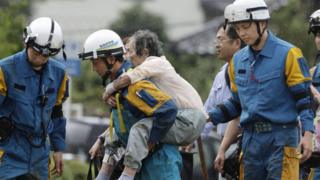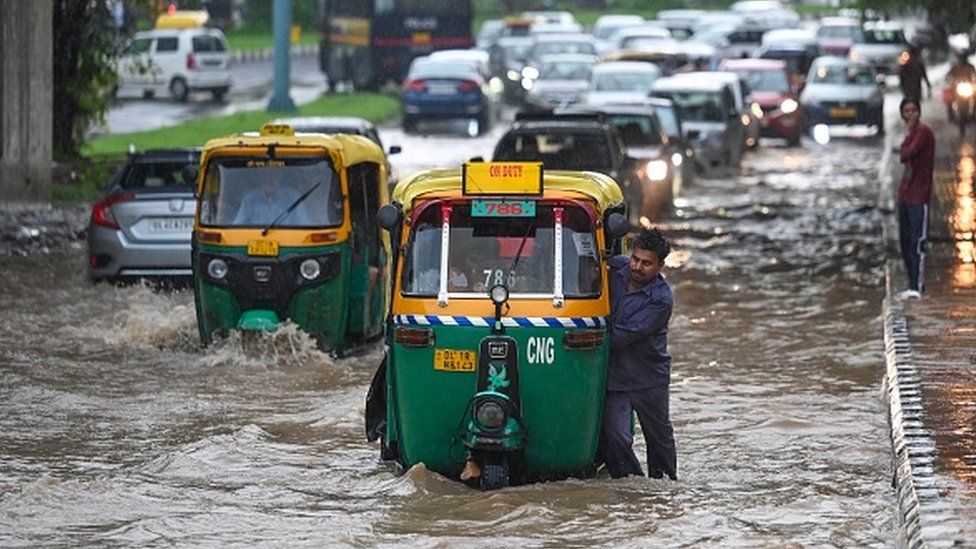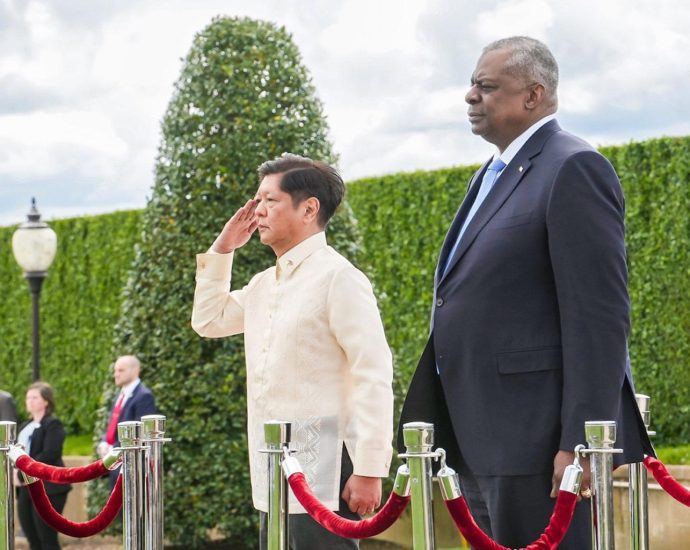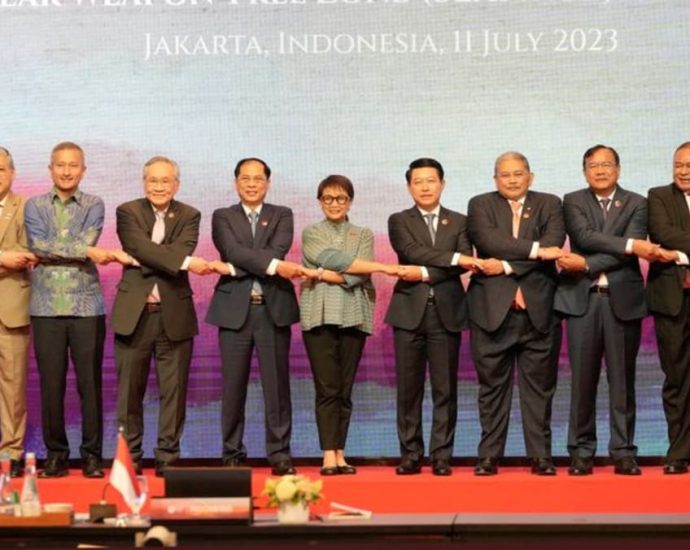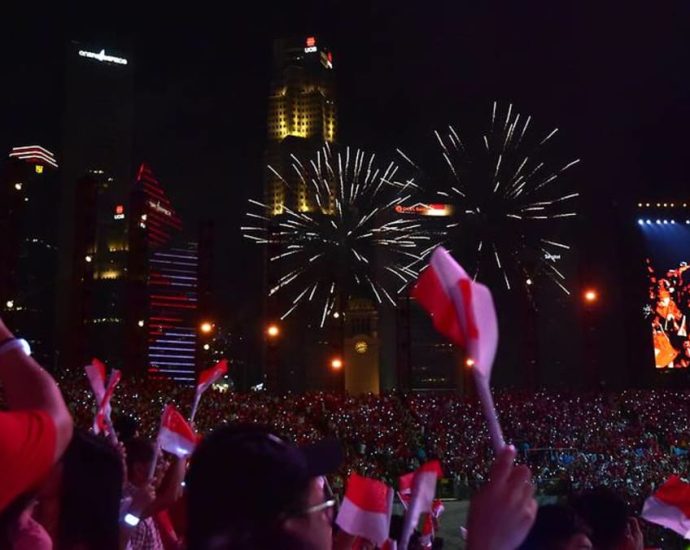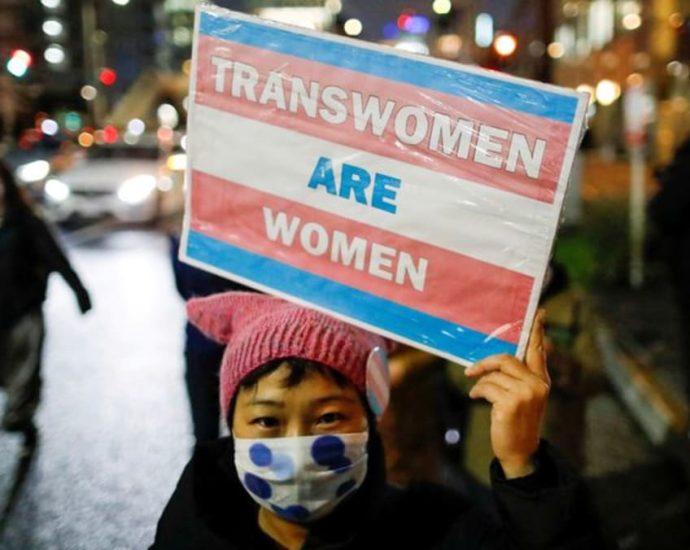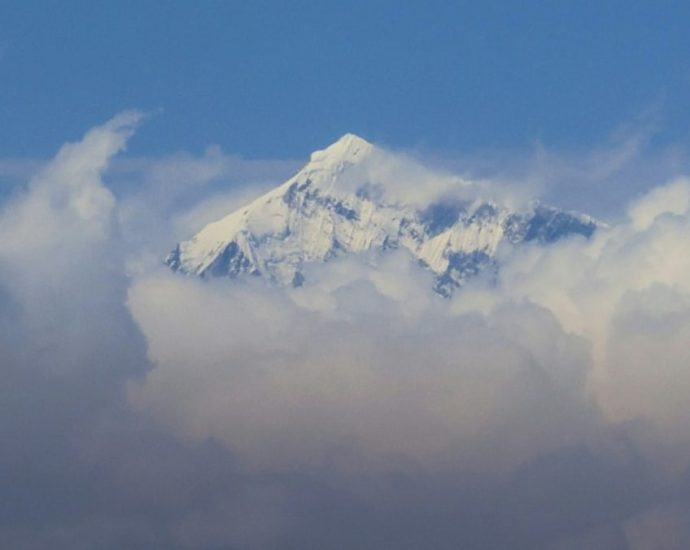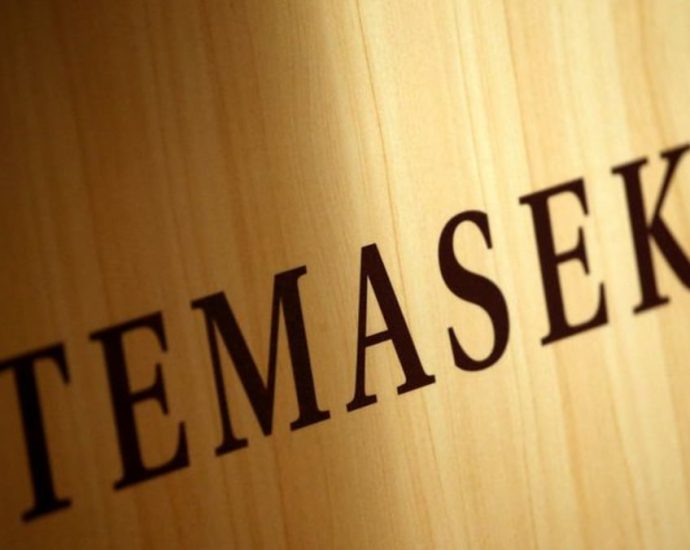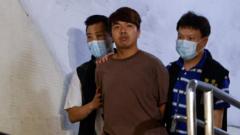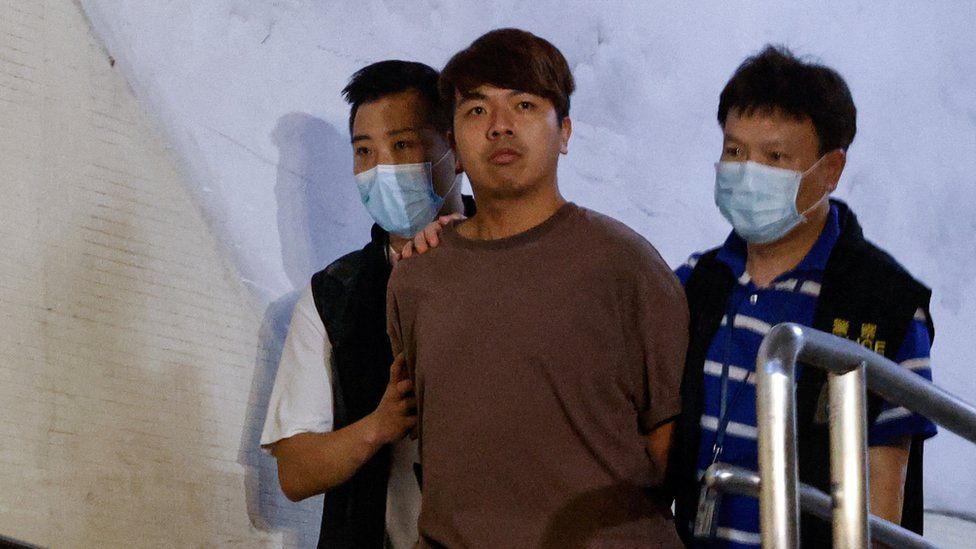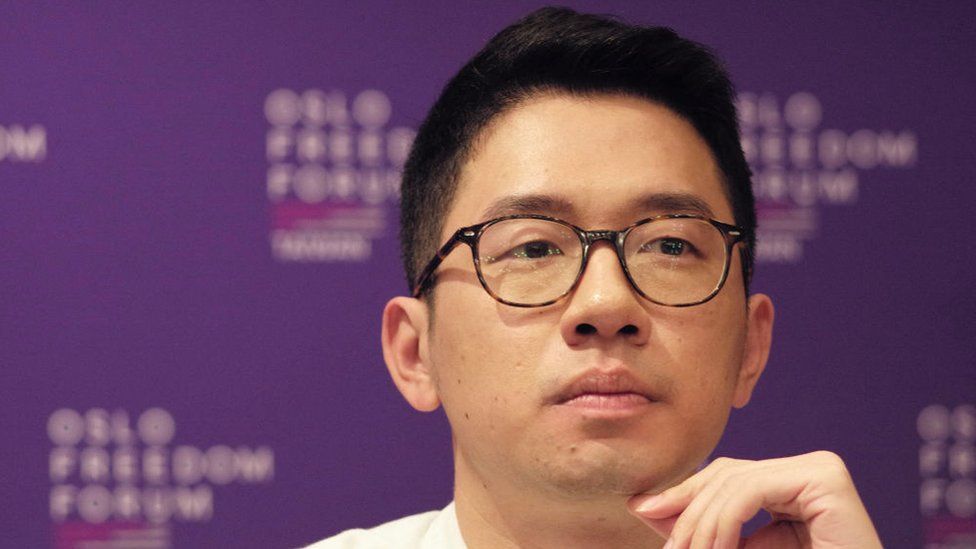Japan floods: three die as island hit by ‘heaviest’ rainfall
 Reuters
ReutersThree people were killed and three others are missing in flooding in southwest Japan caused by the region’s “heaviest” rain ever.
Rivers overflowed and hillsides collapsed as record amounts of rain were dumped on parts of Kyushu island.
The national weather agency logged 402.5mm falling in Kurume on Monday, the highest ever recorded in the city.
Roads and powerlines were cut, and thousands were ordered to evacuate as further downpours were expected.
Satoshi Sugimoto, of the Japanese Meteorological Agency, said he believed the downpours were “the heaviest ever experienced” in the region.
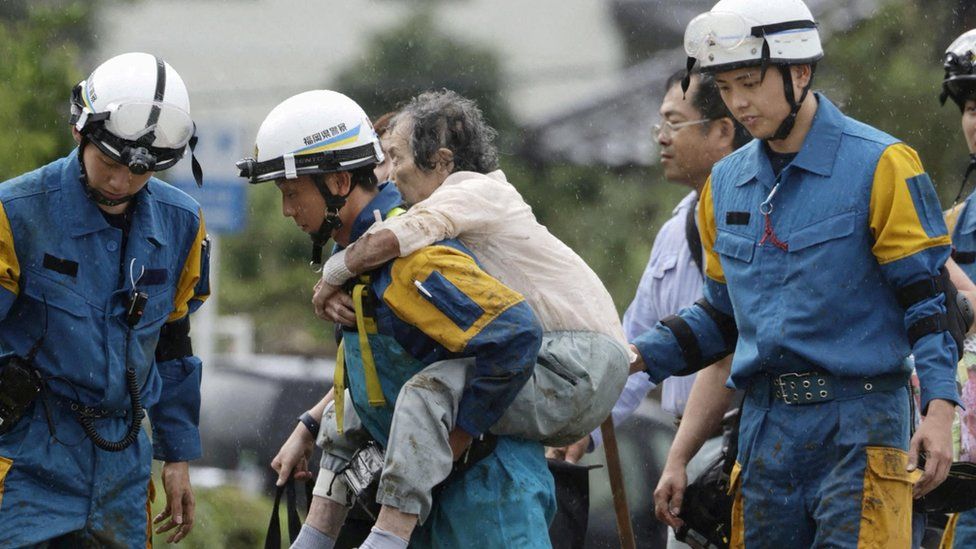
At least three people died in the flooding but the toll could rise, government spokesman Hirokazu Matsuno told AFP news agency. Three people were missing in some of the remotest areas of the island.
“We express our condolences to those who died, and our heartfelt sympathy towards those who were affected by the disaster,” Mr Matsuno said.
The downpours prompted evacuation notices for hundreds of thousands of people and remote communities remain effectively cut off by flooding and other damage, he said.
An elderly woman died when she was trapped in a house engulfed in mud in Soeda, Fukuoka province, local authorities said. Her husband survived. Another victim was apparently washed away by a flooded river while riding in a car in Kurume.
Japan is currently in its annual rainy season, which often brings heavy downpours, and sometimes results in flooding and landslides as well as casualties.
According to the Japanese Meteorological Agency, the heaviest rainfall recorded in Japan was in Hakone, Kanagawa Prefecture, on 12 October, 2019, when 922.5mm fell in one day.
Scientists say climate change is intensifying the risk of heavy rain in Japan and elsewhere, because a warmer atmosphere holds more water.
The weather agency said it had already been raining for more than a week in the region before the heavy downpours that arrived Sunday night.
And while the sun was shining in many areas on Tuesday, officials have warned of more rain in the forecast, which could loosen already sodden ground.
Landslides are a particular risk in Japan during heavy rains because homes are often built on plains at the bottom of hillsides in the mountainous country.

Related Topics
-
-
6 days ago
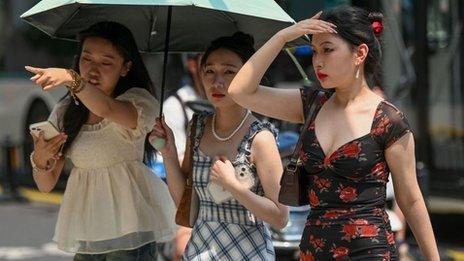
-
-
-
13 October 2019
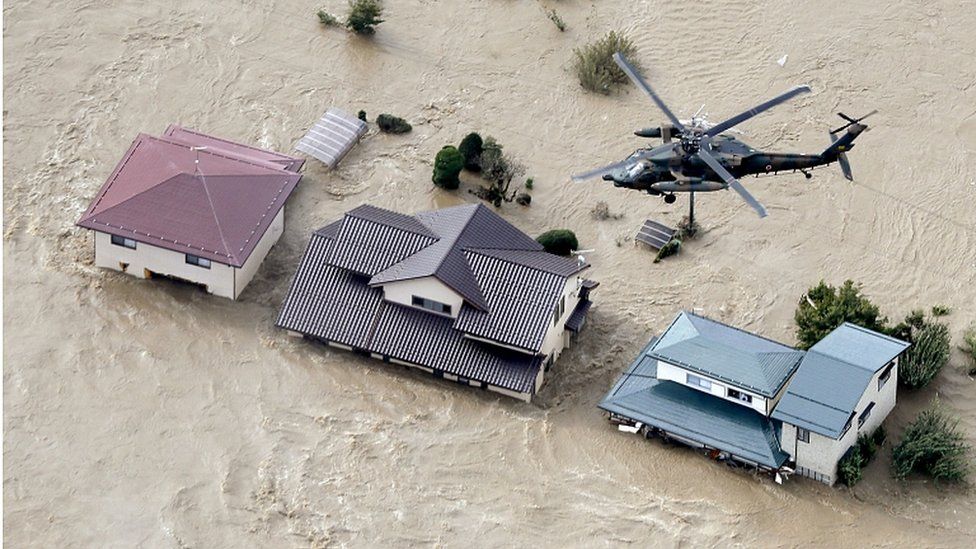
-
China cranks up punitive sea pressure on the Philippines
MANILA – “We believe that the world is big enough for both of our countries to thrive,” declared US Treasury Secretary Janet Yellen on the conclusion of her recent high-profile to Beijing.
But while Yellen’s visit may have injected a semblance of normality into the two sides’ economic diplomacy, geopolitical tensions are still running high in the hotly contested South China Sea.
The Philippines is increasingly at the center of that superpower contest as China appears to be responding aggressively to enhanced US-Philippine defense relations under the Ferdinand Marcos Jr administration.
Crucially, those enhanced ties will allow US rotational forces access to Philippine bases geographically close to Taiwan, potentially giving the US a southern flank in any Chinese invasion of the self-governing democratic island.
Over the weekend, Philippine Coast Guard (PCG) authorities reported that nearly 50 “Chinese maritime militia” ships have been “swarming” Iroquois Reef, which is occupied and claimed by Manila.
Back in 2021, even the Beijing-friendly Duterte administration was forced to file multiple diplomatic protests due to the “continued presence of Chinese fishing vessels in [the] vicinity of Iroquois Reef.” Back then, hundreds of Chinese militia vessels also swarmed other Philippine-claimed land features, most notably the Whitsun Reef.
The Armed Forces of the Philippines (AFP), which says it first detected the latest Chinese militia buildup around the Iroquois Reef during an aerial patrol, also reported the presence of three Chinese Coast Guard (CCG) ships and two People’s Liberation Army-Navy (PLA-N) vessels at the Sabina Shoal, another land feature that falls within the Philippines’ exclusive economic zone (EEZ) in the South China Sea.
Quietly but suddenly, the Philippines is now confronting the buildup of both Chinese conventional and paramilitary forces near or in its claimed territories in the Spratly group of islands.
“During multiple flights over Iroquois Reef in the past week, pilots observed an alarming presence of Chinese fishing vessels. The swarming of Chinese fishing vessels there is quite visible from the air,” AFP spokesman Edgard Abogado said in a statement.
Anticipating standard denials from Chinese authorities who often portray Chinese militia vessels as harmless “fishing boats”, the AFP made it clear that the Chinese fishing vessels were “anchored in groups of five to seven” without any trace of “fishing activities.”

The PCG also accused a Chinese patrol vessel of engaging in what it called a “very dangerous” maneuver by blocking two of its boats from entering the Second Thomas Shoal, which is occupied by Philippine marines.
The incident reportedly involved the PCG vessels BRP Malabrigo and BRP Malapascua during a supply ship escort mission on June 30.
Buoyed by a larger budget and personnel and emboldened by expanding cooperation with the US and other like-minded powers, the PCG is stepping up its game in response.
“I would like to assure you that the Philippine Coast Guard will also take measures to deploy our vessels in order to drive away the Chinese maritime militia from that area,” Philippine Coast Guard (PCG) spokesperson Jay Tarriela told the media.
Tarriela warned that China’s deployment of large numbers of militia vessels was part of a well-worn playbook, whereby the occupation of contested features often begins with “swarm[ing] the area for a very long period of time. If you fail to notice them, they will increase their number eventually [until they occupy the area].”
Over the past year, the PCG has adopted a proactive public diplomacy campaign whereby it consistently and publicly spotlights China’s aggressive actions in adjacent waters in order to galvanize domestic and international support.
“Once we publicize these events, the international community condemns them and various embassies criticize such activities of China. When we follow up with the deployment of our government assets, they leave immediately,” Tarriela claimed.
Indeed, international support has been building for the Philippines ahead of the seventh anniversary of its landmark arbitration award vis-à-vis China at The Hague in 2016. The ruling, based on the United Nations Convention on the Law of the Sea (UNCLOS), rejected China’s nine-dash line expansive claims across the South China Sea.
In an official statement, US Defense Secretary Lloyd Austin reached out to his new Philippine counterpart, Gilberto Teodoro, in order to show solidarity in face of what he referred to as China’s “coercive and risky” behavior.
The US defense chief, who welcomed President Marcos Jr to the Pentagon in May, underscored his country’s “ironclad” commitment to defend the Philippines in the event of armed conflict in the South China Sea as outlined under the two sides’ 1951 Mutual Defense Treaty (MDT).

In recent months, the Pentagon has secured two major deals with its Southeast Asian ally, namely an expanded Enhanced Defense Cooperation Agreement (EDCA), granting access to US forces across a whole host of strategically-located sites, as well as new defense guidelines under the MDT, which expands bilateral security cooperation in all areas of modern warfare.
Other key allies are making their presence felt. Just days after historic French-Philippine naval exercises in the South China Sea, the Embassy of France in Manila called for “respect for international law and the resolution of disputes through dialogue.”
“We are resolutely opposed to any use of force or threat to do so. We recall, in this regard, the arbitration award rendered under UNCLOS on the 12th of July 2016,” the embassy said in a statement.
The Philippines also secured another key major endorsement from India, which under its “non-aligned” foreign policy tradition has generally been “neutral” in its positioning on sensitive international issues such as the South China Sea disputes.
However, following their most recent bilateral strategic dialogue, the two countries underscored their commitment to double down on defense cooperation.
In a joint statement issued after a meeting between Philippine Secretary of Foreign Affairs Enrique Manalo and Indian External Affairs Minister Subrahmanyam Jaishankar in New Delhi last week, the two emerging partners “underlined the need for peaceful settlement of disputes and for adherence to international law, especially the UNCLOS and the 2016 Arbitral Award on the South China Sea in this regard.”
It marked the first time that India directly supported an arbitration case decision, according to local media reports. Incensed by growing international support for Manila, China’s Ministry of Foreign Affairs warned against interference by any “third party.”
“We have [the] ability to handle it well but have to stay high-alert that South China Sea might be turned into the sea of war by the third party,” Zhou Li, a MOFA information department councilor, said in a statement over Twitter.
Li insisted that bilateral negotiations were “the only way to resolve disputes” and to ensure the South China Sea “become[s] the sea of peace, friendship and cooperation.”
“China has always resolved its disputes through negotiations,” the Chinese foreign ministry official said while rejecting “internationalization” of the South China Sea disputes in favor of “set[ting] up bilateral channels of communication to address the disputes.”
Follow Richard Javad Heydarian on Twitter at @Richeydarian
FinanceAsia Volume Two 2023 | FinanceAsia

By now, most of our subscribers will have received print editions of the latest FinanceAsia Magazine: Volume Two 2023.
Over the course of the summer, we look forward to sharing online our in-depth magazine features, including the detailed rationale behind our jury’s selection of winners across our recent flagship FA Awards process.
You can access the full online edition here.
To whet your appetite, read on for our editor’s note.
Positive predictions
As a snake (according to the Chinese zodiac), I have so far fulfilled my Year of the Rabbit prophecy in securing opportunity for career growth within the Haymarket Asia business. A successor will soon have the good fortune to step up as editor in my place, as I become content and business director and oversee the editorial strategy of our finance publications: FinanceAsia, CorporateTreasurer and AsianInvestor.
It is said that those born in 2023 will be blessed with vigilance and quick-mindedness. Very useful personality traits, I would think, as artificial intelligence (AI) advances globally, at pace. We are witnessing great development in this field in Hong Kong – and across the wider Asian economy, as emerging tech becomes the next positive disruptor and the capital markets work to respond through evolving regulation and new listing regimes.
In this summer issue, Christopher Chu delves into the value disruption put forward by generative AI, with consultants estimating its worth to breach $16 trillion by 2030. He explores its sophistication and how its potential is interwoven with political factors, while questions are posed around data ownership.
Also intertwined within the realm of transformative technology, is this edition’s flagship interview with BNP Paribas’ CEO for Asia Pacific, Paul Yang. He shares his journey navigating a career path that has taken him from IT coding in Paris, to leadership of the bank’s Asia Pacific business. He offers insights around his accomplishments to date and details plans to progress the bank’s 2025 Growth, Technology and Sustainability (GTS) strategy.
Reviewing activity across Southeast Asia, Liza Tan inspects the market’s prominent position in the ongoing start-up story, through assessment of the current venture capital (VC) fundraising landscape. Her discussion with experts asserts that fintech is inherently fused with human approach and that quality conversations and connections are key to future success.
Indeed, as FinanceAsia’s recent in-person awards celebration underlined, we have much to look forward to in the second half of the year and it is the human elements involved in dealmaking that have capacity to shape the road ahead. I think we all agree that recognising and nurturing talent is vital and so I hope you enjoy reading our evaluation of market resourcefulness, ingenuity and skill that informed the jury’s selection of award winners, amongst truly outstanding competition.
Finally, Sara Velezmoro and I explore the outlook for Asia’s debt capital markets – investigating what opportunity is on offer alongside the changing environment; and whether the momentum surrounding Japanese equities can be sustained, if the government were to reverse yield curve control.
Amid uncertainty we must focus on potential, so please join me in acknowledging the positive strides being taken by Asia’s market movers.
Ella Arwyn Jones
(Please feel free to send feedback or suggestions to [email protected])
¬ Haymarket Media Limited. All rights reserved.
ASEAN chair urges unity as top diplomats meet amid Myanmar discord
JAKARTA: ASEAN chair Indonesia on Tuesday (Jul 11) stressed the importance of the regional bloc’s unity in remaining credible, as its foreign ministers started talks expected to touch on the thorny issue of engaging Myanmar’s ostracised ruling generals. The meeting of the Association of Southeast Asian Nations in Jakarta comesContinue Reading
National Day celebrations in the heartlands as Singapore turns 58

NATIONAL DAY
On Aug 9, prior to the parade at the Padang, two CH-47SD Chinook helicopters, each escorted by two AH-64D Apache helicopters, will execute the “Fly Our Flag” segment, flying the state flag across Singapore.
Starting from around 5.30pm to 6.30pm, the helicopters will fly two routes – a western route that takes them past locations such as Woodlands, Choa Chu Kang and Jurong, and an eastern route which includes Bukit Timah, Toa Payoh, Bishan, Pasir Ris, Tampines and Changi.
From 5.40pm to 6.10pm, an A330 Multi-Role Tanker Transport accompanied by six F-16D+ and three F-15SG fighter aircraft will execute the RSAF55 Island Flypast, flying in the vicinity of the five heartland sites: Jurong West, Woodlands, Toa Payoh, Tampines and Bedok.
The RSAF55 F-15SG, with its RSAF55 tail flash, will also be a part of this formation, greeting Singaporeans in the heartlands.
Concurrent with the fireworks medley at the Padang on National Day, fireworks will also go off at the five heartland sites, which will be open to the public from 6pm.
The fireworks display is expected to take place between 8.15pm and 8.25pm.
Public viewing at these sites will be facilitated on a first-come, first-served basis, said the NDP 2023 Executive Committee and SportSG.
ActiveSG chief Tan Hock Leong said: “We hope that residents near these sites will bring their family and friends to join us in celebrating National Day through sport.”
Toilet limits for transgender woman ‘unacceptable’: Japan’s top court
TOKYO: Japan’s Supreme Court ruled on Tuesday (Jul 11) that restricting a transgender woman’s use of toilets at her workplace was “unacceptable”, a decision that may help promote lesbian, gay, bisexual and transgender rights in the only G7 nation without legal protection for same-sex unions. The ruling, the first byContinue Reading
Nepal retrieves bodies of six dead in helicopter crash, five Mexicans among them
KATHMANDU: Authorities in Nepal have retrieved the bodies of all six people killed in a helicopter crash on Tuesday (Jul 11), including five Mexican nationals, authorities said, the latest in a series of air disasters to strike the Himalayan nation. The cause of the crash near Likkhu, just northeast of theContinue Reading
Familes exhorted to have at least 2 children, as birthrate falls
Fewer entering the workforce than are going into retirement

Each Thai family should aim to have at least two children to help halt the country’s falling birthrate, Thailand’s most senior health official said on Tuesday, which is the UN’s World Population Day.
Suwannachai Wattanayingcharoenchai, director-general of the Department of Health, said there had been at least one million births in Thaiiland each year from 1963 to 1983, but the birthrate fell to 502,107 last year and is likely to be below 500,000 this year.
Simiar falling birthrates had been reported by 120 other countries, including China, Japan, Singapore, South Korea and Vietnam in Thailand’s immediate area, Dr Suwannachai said
At the same time, the number of elderly citizens is rising. In 2021 Thailand became an aged society with people 60 years or more constituting 20% of its population. By 2036 the country would be a hyper-aged society, with senior citizens making up 30% of its population, if the trend continued.
“2023 is the first year when the number of people becoming of working age, 20-24 years old, cannot make up for the number of people leaving the workforce at age 60-64 years,” Dr Suwannachai said.
Since 2016, the government had tried to encourage people to have more children but these measures had not worked, he said. Recent measures included the opening of more nurseries, improved rights to materinity and parternity leave, work-from-home policies and flexible working hours.
The government also postponed compulsory retirement and promoted retirement savings and vocational programmes to help cope with an aged society, Dr Suwannachai said.
Boonyarit Sukrat, director of the Bureau of Reproductive Health, said the desired increase in the Thai population could not come in time to solve the shortage of workers, and that could affect gross domestic product and the security of the nation.
Importing workers of high potential could be one solution the government could invest in, Dr Boonyarit said.
World Population Day has been observed annually on July 11 since 1989 when it was launched by the United Nations Development Programme to raise awareness of global population issues.
Temasek reports drop in portfolio value to S$382 billion; maintains cautious investment stance
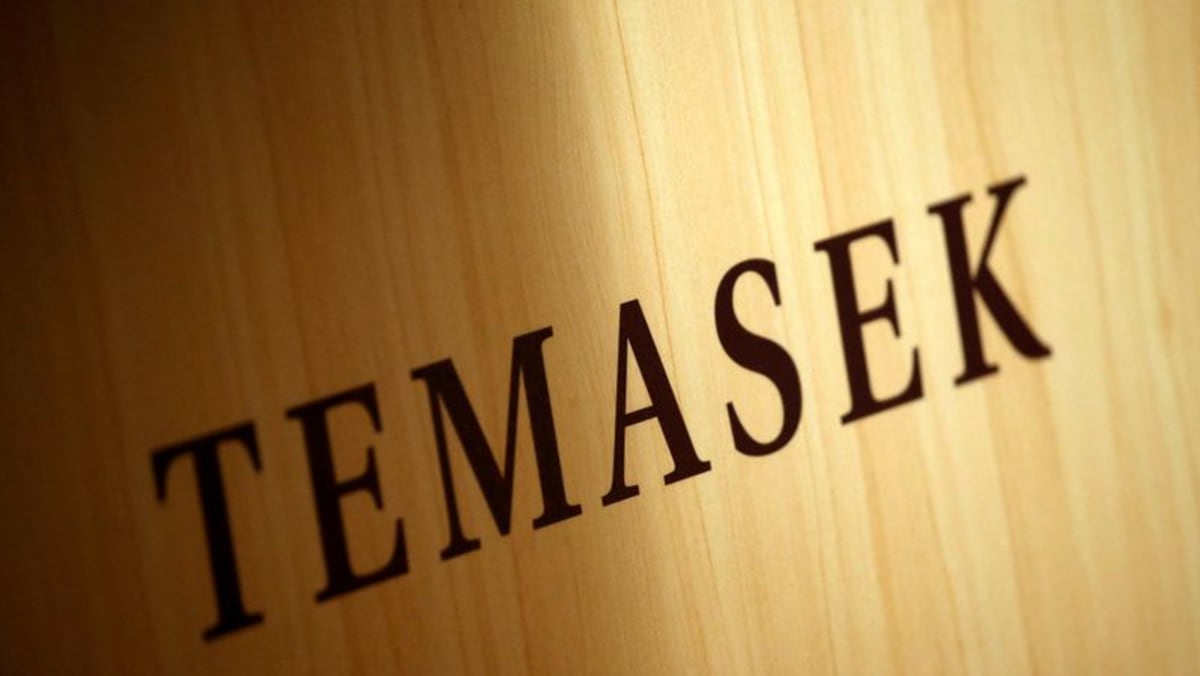
SINGAPORE: Temasek Holdings on Tuesday (Jul 11) reported a 5.2 per cent fall in the value of its net portfolio and signalled a “cautious” investment stance ahead amid a challenging macroeconomic environment.
For the financial year ended Mar 31, its net portfolio was valued at S$382 billion (US$287 billion), down S$21 billion from the record S$403 billion it achieved a year ago, according to its latest annual review.
Its one-year total shareholder return, which takes into account all dividends distributed to the shareholder minus any capital injections, turned negative to -5.07 per cent from the 5.81 per cent gain a year ago.
This was largely due to a fall in equity valuations, both in the public and private markets, Temasek’s chief financial officer Png Chin Yee said at a press conference.
While its portfolio companies in Singapore remained resilient, its global direct investments saw a reversal of gains from the high valuations in the last two years, particularly in the technology, healthcare and payments space, as valuations de-rated in the higher interest rate environment.
Over a longer term, its 10-year and 20-year total shareholder returns stood at 6 per cent and 9 per cent respectively, down slightly from 7 and 8 per cent in the previous year.
The state investor is one of the three entities tasked to invest Singapore’s reserves, with part of its returns tapped every year for the annual Budget.
Under the Net Investment Returns Contribution (NIRC) framework, the Government can spend up to half of the long-term expected investment returns generated by Temasek, sovereign wealth fund GIC and the Monetary Authority of Singapore.
Temasek invested S$31 billion and divested S$27 billion in the last financial year, as it adopted a cautious approach amid global uncertainties. Deal activity globally also slowed down as liquidity tightened, it said.
Overall, Asia remained the anchor of the investor’s portfolio at 63 per cent, with Singapore (28 per cent), China (22 per cent) and the Americas (21 per cent) remaining the top three markets.
Transportation and industrials (23 per cent) and financial services (21 per cent) continued to account for the biggest sectors in Temasek’s portfolio.
The proportion of unlisted assets in its portfolio made up 53 per cent of the portfolio, up 1 per cent from a year ago, which saw unlisted assets overtaking listed assets for the first time.
Temasek said its unlisted portfolio is “well diversified” across geographies and sectors, with steady growth over the years due to investments in “attractive opportunities” in private markets and the increase in the value of its unlisted assets.
Over the last decade, the unlisted portfolio has generated returns of over 10 per cent per annum on an internal rate of return basis, delivering higher returns than its listed portfolio, it added.
These include returns when the unlisted investments were listed or sold, as well as from the strong performance of the underlying companies. For example, some of its holdings, such as payments technology provider Adyen and on-demand services platform Meituan have listed with “significant value uplift” in the past five years.
On its early-stage portfolio, Ms Png said Temasek invests in early-stage companies as part of identifying future trends and to gain insights into emerging technologies and business models.
To manage the higher risks that come with these investments, it has kept its exposure to early-stage companies to 6 per cent of its total portfolio, she added.
Temasek said last November that it would write down its US$275 million investment into cryptocurrency firm FTX. In May, it said it had cut the compensation of its senior management and the investment team involved in the failed investment.
Nathan Law: Police raid family home of exiled Hong Kong activist
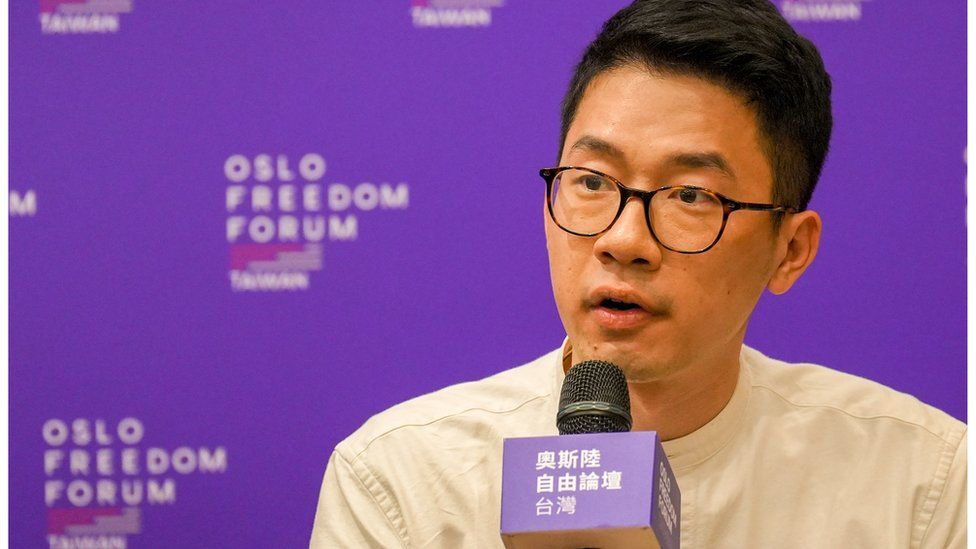 Getty Images
Getty ImagesHong Kong police have raided the family home of Nathan Law, a leading pro-democracy activist in exile in the UK.
Local media reported that Mr Law’s parents and one of his brothers were also taken away for questioning.
The raid comes a week after authorities issued a HK$1m (£99,100; US$127,800) bounty for his arrest, as well as for that of seven other activists.
Mr Law, who fled to the UK in 2020 where he was granted political asylum, is yet to comment on the developments.
However he told the BBC last week he would have to be more careful following the order.
Hong Kong authorities on 3 July issued arrest warrants and rewards for information leading to the capture of Mr Law and seven other Hong Kong political activists living in exile.
The eight activists targeted are accused of colluding with foreign forces – a crime that can carry a sentence of life in prison. The offence comes under Hong Kong’s draconian security law, which was imposed three years ago after widespread pro-democracy protests took place in the former British territory in 2019.
The countries in which the activists live – the UK, the US and Australia – do not have extradition treaties with China, and have condemned the order from Hong Kong authorities.
However, at least five people with connections to the activists have been arrested in Hong Kong since the announcement.
Mr Law is one of the most prominent figures in Hong Kong’s pro-democracy movement, and was one of the unofficial leaders of the 2019 demonstrations.
After fleeing Hong Kong in 2020, he had issued a statement saying he had cut off all ties with his family.
He told the BBC last week he felt his situation was “relatively safe” in the UK, but he would have to be more vigilant as a result of the bounty’s announcement.
“There could possibly be someone in the UK – or anywhere else – to provide informations of me to (the Hong Kong authorities). For example, my whereabouts, where they could possibly extradite me when I’m transiting in certain countries,” Mr Law said.
“All these things may put my life in to dangerous situations if I’m not careful enough of who I meet or where I go. It makes me have to live in a more careful life.”

